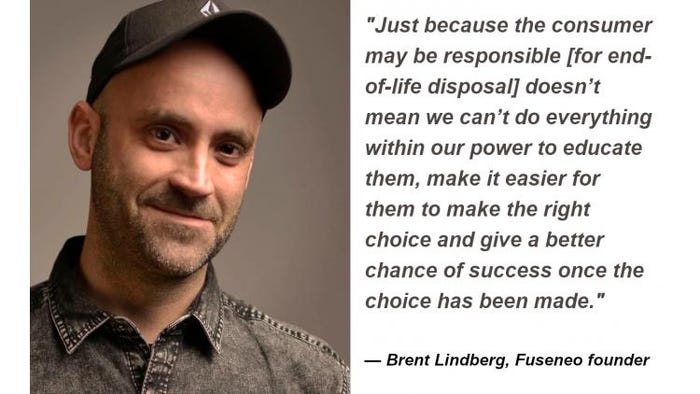How to plan for your package’s funeral
Burial, cremation or reincarnation? What choice will you make for your package? How you design your packaging at its birth often determines its fate at the end of its life.
Brent Lindberg, founder of design agency Fuseneo Inc., will share his tips next week with attendees of SPC Impact 2019 (Apr. 1-4, Seattle, WA), the leading sustainable packaging conference organized by the professionals at the Sustainable Packaging Coalition. Taking place on Tues., Apr. 2, his three-hour hands-on Idea Lab will explore packaging designs for recyclability or responsible disposal.
Lindberg explains a few things here, including why it’s important to take time up front to consider end of life.
What do you mean by responsible disposal?
Lindberg: We’re referring to everything but recycling. Whether something is designed to be recycled, composted or get thrown in the trash, we need to be intentional. We need to understand what happens within each system and the implications on our packaging
What’s different about designing a package for the end of its life today that wasn’t a concern, say, five years ago and why does that matter now?
Lindberg: With the strain and changes in the recycling infrastructure, combined with the pledges many brands are making, we need to understand how packaging is used, discarded, sorted and recycled. The design of packaging will play an important role in the future viability of recycling. The recycling system may need regulation, technology and investment, but it also needs clean supply—that’s where we come in. We also need to understand the implications of decoration, assembly and the current state of composting.
When it comes to a package’s funeral, the consumer is likely the one to be responsible for disposal, not the product manufacturer. How can these two parties best work together for the most beneficial environmental outcome overall?
Lindberg: Just because the consumer may be responsible doesn’t mean we can’t do everything within our power to educate them, make it easier for them to make the right choice and give a better chance of success once the choice has been made.

Speed-to-market is a top concern for most companies. How long does it typically take during the packaging design ideation phase to consider different end-of-life scenarios and why is this time well spent?
Lindberg: It doesn’t necessarily add time, it just adds inputs and considerations—unless major issues are identified and things need to be re-worked. This is more than just time well spent; this is our responsibility as stewards of packaging.
********************************************************************************
EastPack 2019 (June 11-13) is the region's premier packaging event connecting professionals from companies like PepsiCo, Pepperidge Farms and Mars with suppliers offering the latest packaging technologies, including a range of automation solutions, from semi-automatic equipment to sophisticated "smart" systems. Register to attend today!
About the Author(s)
You May Also Like




